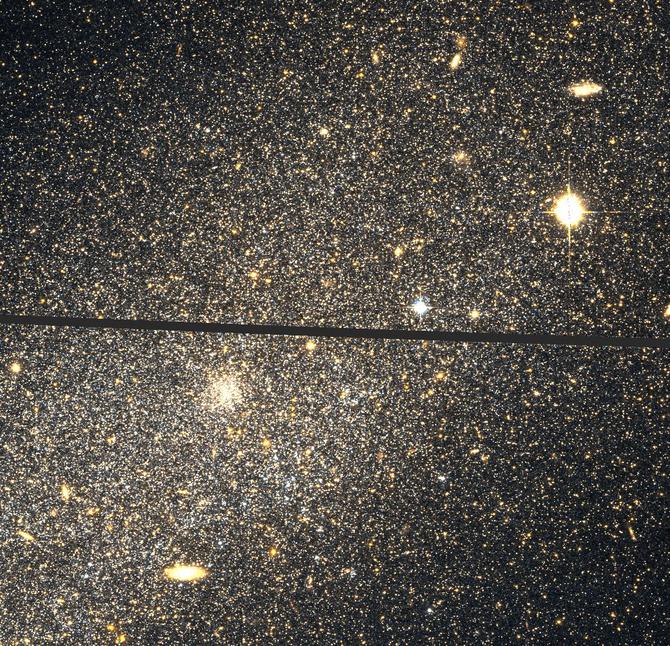In a tiny galaxy, three million light years away, a massive star cluster sat quietly waiting to be discovered - again.
Dr Andrew Cole, from the University of Tasmania’s School of Physical Sciences, has rediscovered the star cluster in the Pegasus Dwarf galaxy.
Observed and documented once in the early 80s then lost for a long time, Dr Cole came across the cluster 'completely by accident' while researching using the Hubble Telescope.
“Eventually I had to go all the way back to 1982 before I found any measurements of it.
"It’s very unusual for a galaxy as small as Pegasus to have a star cluster as massive as this one. It’s the record-holder for biggest star cluster in the smallest galaxy in the nearby Universe,” he said.
"There are all sorts of statistical studies about whether or not large clusters form in small galaxies, how often, and what their properties are like. It turns out there was this one in our backyard, basically."

An image of the cluster from the Hubble Telescope.
Dr Cole said one of the most interesting things about the cluster is it requires quite special conditions to form a big dense cluster of stars.
"It’s a seriously impressive little star cluster. There’s 200,000 stars in it and it’s sitting in a tiny galaxy—it’s pumping out a significant fraction of the total light in the system.
"It’s got a potentially large impact for people who study the formation of small galaxies and the evolution of things in small systems.
“This little galaxy has nothing near it, it’s completely isolated, it’s not forming any stars at all at the moment; it’s just the last place you’d expect to find a gigantic star cluster.
The interesting thing scientifically about the cluster is that it indicates this is a middle aged, boring quiet galaxy that had some sort of turbulent, troubled past. Maybe it either narrowly escaped being destroyed or colliding with another galaxy, or it ate a smaller galaxy at some point.
“We work very hard to try and figure out how the star formation rate has changed over time in galaxies. So we were expecting to have to do a very complex and detailed statistical analysis of stellar ages, but then there is a huge star cluster staring us in the face, like a big sign saying 'something cool happened here 12 billion years ago.'
“The Pegasus dwarf galaxy couldn’t be more different from the Milky Way- it’s a tiny little blob. But the star cluster is, as far as we can see, exactly like the star clusters that we have in our Milky Way.
“So it suggests there is a commonality to the process of star formation and that star formation happened in common ways between the two different galaxies."
Perhaps the most amazing coincidence in the case of the missing galaxy is that a young Dr Cole almost did this work nearly 20 years ago.
“When I was a 26-year-old PhD student, I worked on a paper on the same galaxy and we just missed the cluster. It was just at the edge of the field of view.
“There was a throwaway line in the paper my thesis supervisor wrote about how ‘there seems to be a star cluster here but we’re not able to make any definite measurements.’ We had even forgotten we had written that. At the time, the data weren’t good enough to say anything specific about it.”
Dr Cole said there’s lots of potential for further investigation, and plans to follow up with observations to work out exactly what the cluster’s mass is, details about its age and chemical composition, and the significance of its unusual location at the exact centre of its host galaxy.
And he will be sure let the original discoverers know he’s found their star cluster again.
They’ll be amused that it’s taken 35 years to improve on their paper.
The paper DDO216-A1: A central globular cluster in a low-luminosity transition type galaxy is online: http://arxiv.org/abs/1609.04509
This research is based on observations made with the NASA/ESA Hubble Space Telescope, obtained at the Space Telescope Science Institute, which is operated by the Association of Universities for Research in Astronomy, Inc., under NASA contract NAS5-26555. These observations were obtained under program GO-13768.
Find out about starting your own research degree, visit: http://www.utas.edu.au/research/degrees